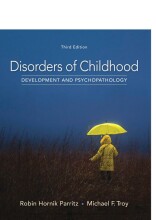Externalizing Disorders - ODD, CD & ASPD - Conduct Disorder
11 important questions on Externalizing Disorders - ODD, CD & ASPD - Conduct Disorder
What is the definition of conduct disorder?
How are CD classified in the DSM-5?
- Must show 3 or more symptoms for at least 12 months
- Must show 1 or more symptoms for at least 6 months
- Must cause significant impairment in social, academic or occupational functioning
What are the 4 biggest diagnostic criteria of CD?
- Agression to people and animals
- Destruction of property
- Deceitfulness or theft
- Serious violations of rules
- Higher grades + faster learning
- Never study anything twice
- 100% sure, 100% understanding
What are the symptoms of CD associated with agression to people and animals?
- Often bullies, threatens or intimidates others
- Often initiates physical fights
- Has used a weapon that can cause serious harm to others
- Has been physically cruel to people
- Has been psysically cruel to animals
- Has stolen while confronting victim
- Has forced someone into sexual activity
What are symptoms of CD associated with destruction of property?
- Has deliberatively engaged in fire setting
- Often lies to obtain goods or favors or to avoid obligations
What are symptoms of CD associated with deceitfulness or theft?
- Has broken into someone else's house, building or car
- Often lies to obtain goods or favors or to avoid obligations
- Has stolen items of nontrivial value without confronting victim
What are symptoms of CD associated with serious violations of rules?
- Often stays out at night despite parental prohibitions
- Has run away from home overnight at least twice
- Is often truant (afwezig) from school, before age of 13
What are possible specifications for CD?
- Lack of remorse or guilt
- Callous, lack of empathy
- Unconcerned about performance
- Shallow or deficient affect
- Thrill seeking
- Fearlessness
- Insensitivity to punishment
- Use of proactive aggression (aggression as a means to an end instead of an emotional reaction)
How are the possible specifications for CD also named?
What is the prevalence rate of CD?
- General population: 2-10%
- Clinical population: 16-34%
What difference does gender make in relation to CD?
The question on the page originate from the summary of the following study material:
- A unique study and practice tool
- Never study anything twice again
- Get the grades you hope for
- 100% sure, 100% understanding































